The Ultimate Guide to Storing Your Yarn Stash (So It Actually Lasts)
After more than two decades of playing with fiber, let’s just say my yarn collection has… grown. It started small, with just a couple of skeins for a scarf. Now, it’s a full-blown library of materials for my design work and classes. I’ve seen firsthand how a little bit of smart storage can keep a beautiful skein perfect for years, and I’ve also witnessed the horror of poor storage ruining one in a single season. This isn’t about having a Pinterest-perfect craft room (though that’s nice, too!). It’s about protecting the time, money, and passion you’ve poured into your stash.
In this article
- First Things First: Know Your Enemy
- My Go-To Method for Stash Management
- Choosing Your Storage Armor
- 5 in the recycling symbol). This plastic is stable and won’t damage your yarn. Steer clear of PVC. You can find good Sterilite or Rubbermaid bins at places like Target or Walmart. For wool, I like to drill a few tiny (1/8 inch) holes in the lid to allow for some air exchange and prevent mustiness. The Cost: Very budget-friendly. You can get a solid, lidded 60-quart bin for about $10-$20. The Solution: Vacuum-Sealed Bags Ah, the space-saver’s dream! They seem like a brilliant idea, but you need to be careful. Best For: Storing bulky acrylics or other synthetic fibers where you just want to shrink them down for space. The Reality: This is a TERRIBLE idea for wool, alpaca, or any fiber with natural elasticity. Sucking all the air out crushes the fibers, and they may never regain their original bounce and fluff. You’re basically killing what makes the yarn special. Use them for your bomb-proof synthetics only. The Cost: A pack of assorted-size bags usually runs between $20 and $40. The Solution: Cedar Chests This is the traditional, heirloom-quality solution. The aromatic oils in the wood are a natural moth repellent. Best For: Your most precious, high-end fibers like cashmere, qiviut, or special silks. The Reality: They’re effective, but the cedar scent fades and needs to be refreshed every few years by lightly sanding the interior or using cedar oil. They’re also heavy and can be a serious investment. The Cost: The luxury option. A good one can easily run you $200 to $500 or more. Your Home’s Climate is a Big Deal Where you live has a massive impact on your storage strategy. The advice I give a knitter in Arizona is totally different from what I tell someone in Louisiana. If you live somewhere with high humidity, your main enemy is mold. You have to prioritize air circulation. Never, ever store yarn in a basement, garage, or attic unless it’s fully climate-controlled. Use those plastic bins with ventilation holes. You can also toss in some rechargeable desiccant packs (those silica gel canisters). Quick tip: Most of these can be “recharged” by baking them in a low oven for a few hours—just check the manufacturer’s instructions! Early in my career, I learned this the hard way. I stored bags of beautiful Pima cotton in a friend’s garage in Florida for one summer. When I came back, every last skein was a disgusting, smelly mess of black and green mildew. A total loss. It was a costly mistake that taught me to always respect humidity. If you live in a dry or arid region, your concerns are dust and brittleness. Closed containers are a must to keep out that fine, pervasive dust. For really delicate fibers, you might even consider running a small humidifier in your craft room to help them retain a healthy bit of moisture. Pest Patrol: This is Non-Negotiable Okay, listen up, because this is probably the most important part of this whole guide. A single pest infestation can wipe out a lifetime collection of yarn. You have to be vigilant. The main culprits are clothes moths and carpet beetles—and it’s their larvae that do the eating. Prevention is Your Best Defense
- When You Find an Infestation
- Final Thoughts: It’s a Practice, Not a Project
- Inspirational Gallery
So many of us face the same challenge, right? Your collection of gorgeous yarn seems to grow way faster than your project queue. It can feel a little overwhelming. But here’s the thing: organizing your yarn is a skill, just like knitting or crocheting. It’s all about understanding what your yarn is made of and what its enemies are. With the right game plan, you can create a system that keeps your yarn safe, easy to find, and ready for when inspiration strikes. This is my breakdown of the pro techniques I use and teach for getting a handle on a fiber collection of any size.
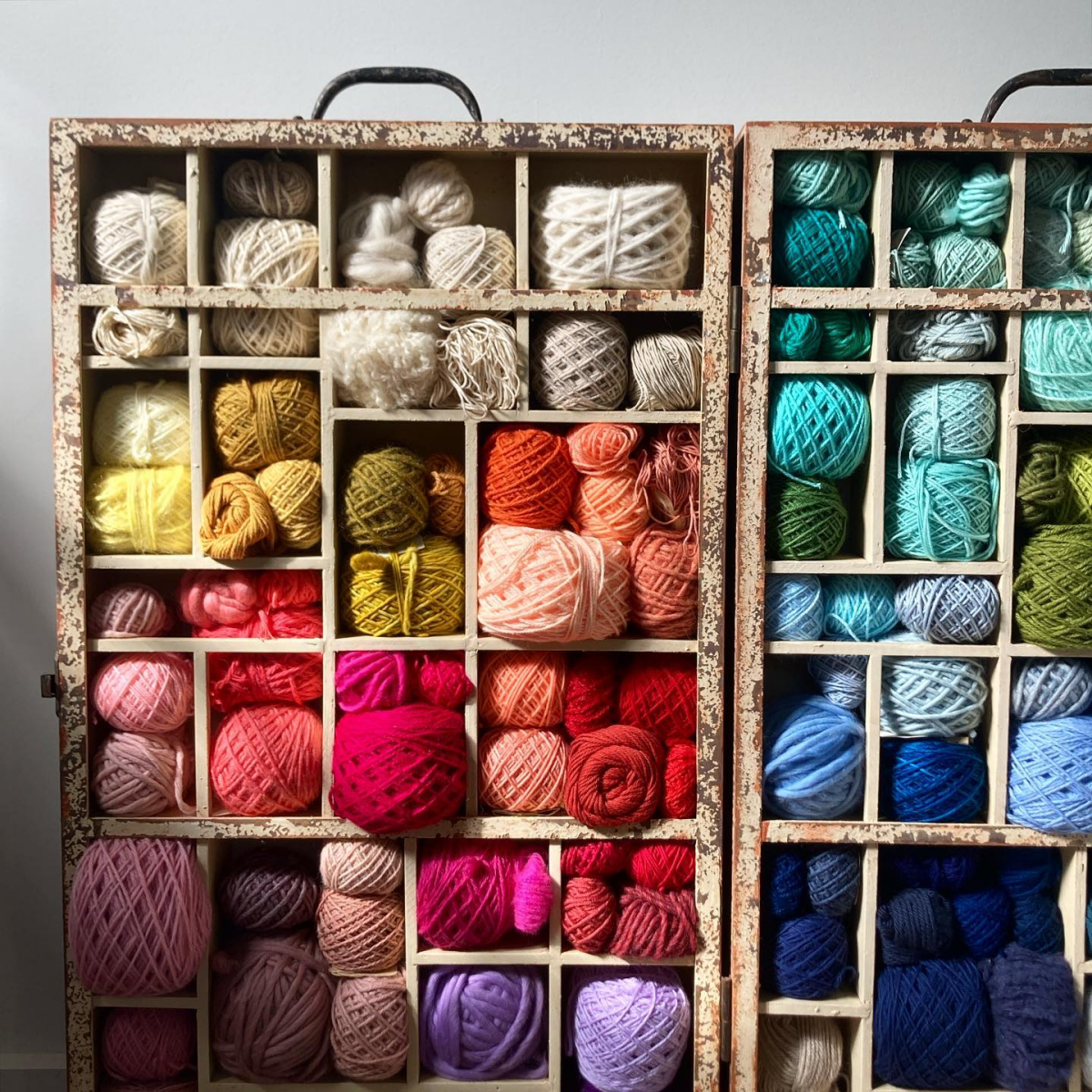
First Things First: Know Your Enemy
To protect your yarn, you have to know what you’re up against. Every fiber, whether it came from an animal, a plant, or a lab, has a kryptonite. The four main villains you’re fighting are UV light, moisture, pests, and physical stress. Let’s break down why they’re such a problem.
A Quick Look at Different Fibers
Not all yarns are created equal, and they definitely don’t have the same needs. Their physical and chemical makeup dictates how you should care for them.
Animal Fibers (Wool, Alpaca, Silk, etc.): These are protein-based fibers—think of them like your own hair. They’re amazingly strong and elastic, but they are also a five-star meal for certain insects. Moths and carpet beetles are specifically looking for the protein (keratin) in wool. And while high humidity can make wool feel a bit damp, it actually needs some moisture to stay flexible. It has to breathe. That’s why sealing it in a non-breathable container for years is a bad idea; it can trap moisture and get musty.
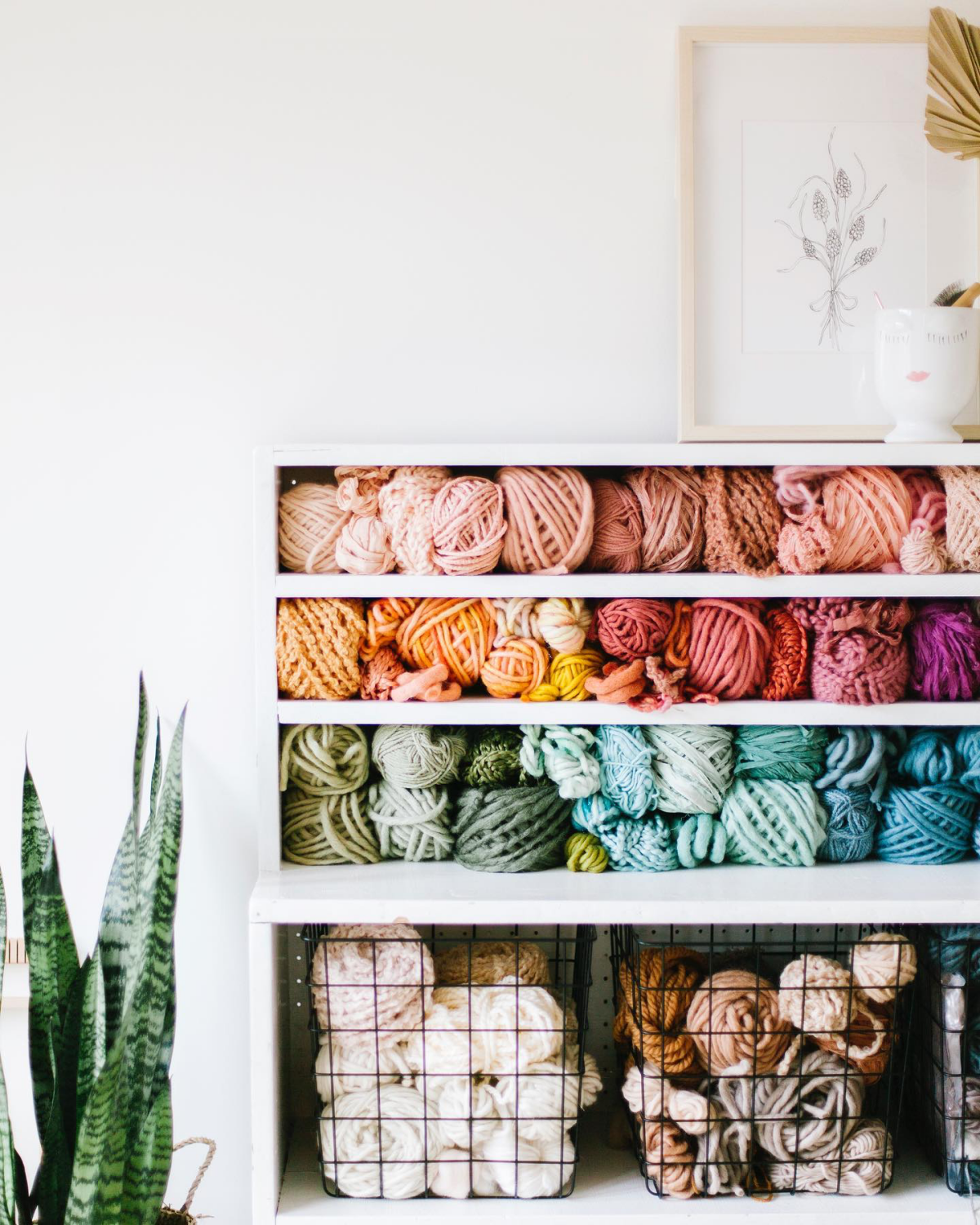
Plant Fibers (Cotton, Linen, Bamboo): These are made of cellulose. The great news? They aren’t on the menu for moths. The bad news? Their mortal enemy is moisture. In a humid spot, these fibers are a magnet for mold and mildew. Once mildew sets in, those dark stains and that musty smell are practically impossible to get out. If you’ve ever smelled old books in a damp attic, you know the scent of cellulose breaking down. Plant fibers can also get brittle and yellow if they’re stored long-term against acidic materials, like plain old cardboard boxes or unsealed wood shelves.
Synthetic Fibers (Acrylic, Nylon, Polyester): At their core, these are plastics. They are totally immune to pests and mold, which makes them super easy to store. Their main weaknesses? Heat and sunlight. Direct UV light will absolutely fade their vibrant colors and, over time, can make the fibers feel rough and weak. A skein left on a sunny windowsill for a few months can be a shadow of its former self. They also build up a ton of static in dry weather, turning them into magnets for dust and pet hair.
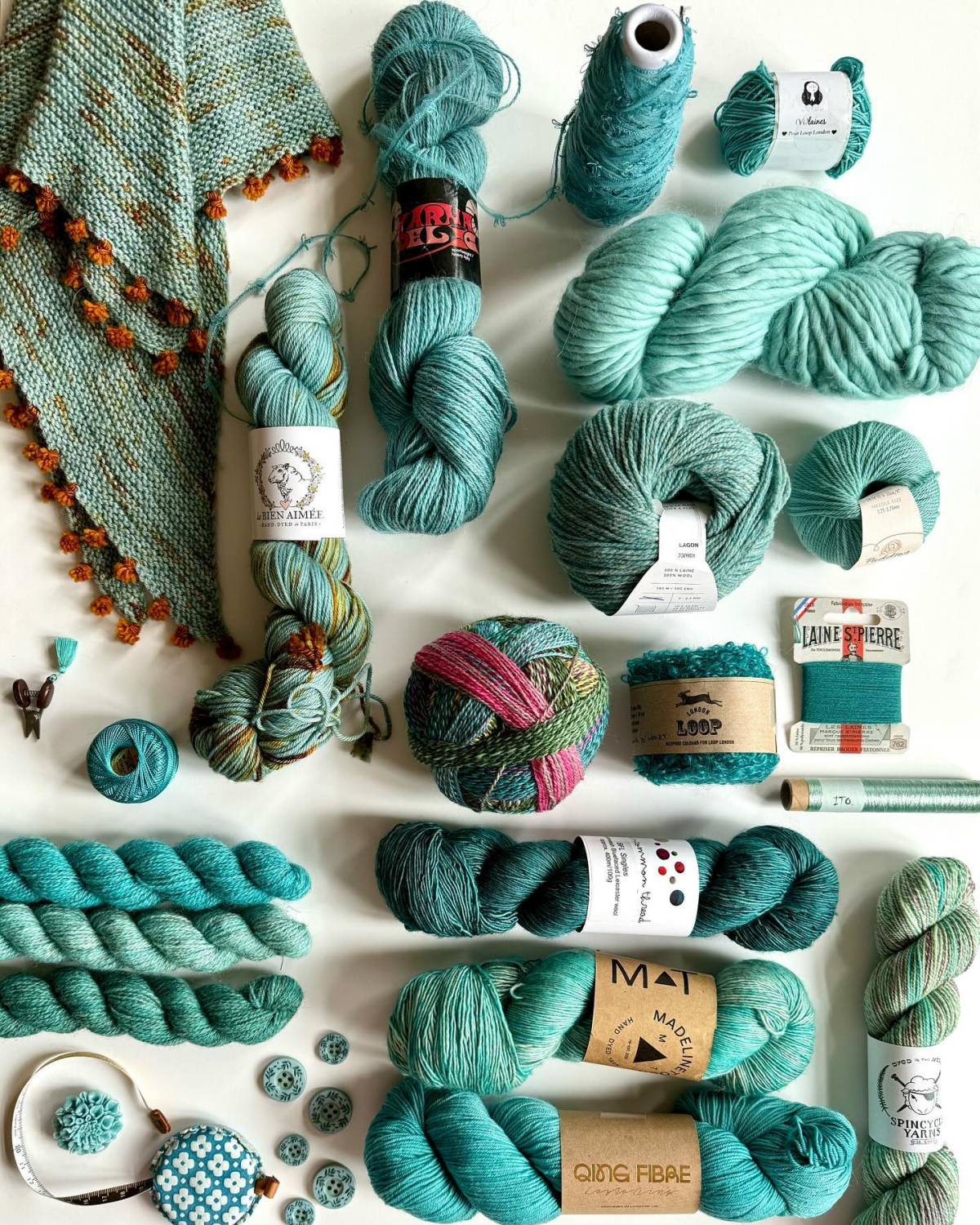
My Go-To Method for Stash Management
In a professional setting, a yarn stash is basically an inventory. It needs to be organized for pure function, not just looks. Whether you have a modest 20 skeins or a mountain of 2,000, having a system will save you so much time and prevent waste. It all starts with a big, honest audit.
Step 1: The Stash Reality Check
Before you even think about buying a single storage bin, you need to know what you’re working with. Take everything out. Pile it all on the living room floor. Honestly, it’s the only way to understand the true scale of your collection. As you go through each skein, you’ll find forgotten gems and, let’s be real, some yarns you don’t even like anymore.
Group your yarn into three piles: Keep, Donate/Sell, and Discard. Be ruthless. If you’ve hated working with that scratchy acrylic for five years, it’s time to let it go. Anything damaged, smelly, or hopelessly tangled belongs in the discard pile. Yarns that are perfectly good but just not your style can be donated to a local school, a charity knitting group, or sold online.
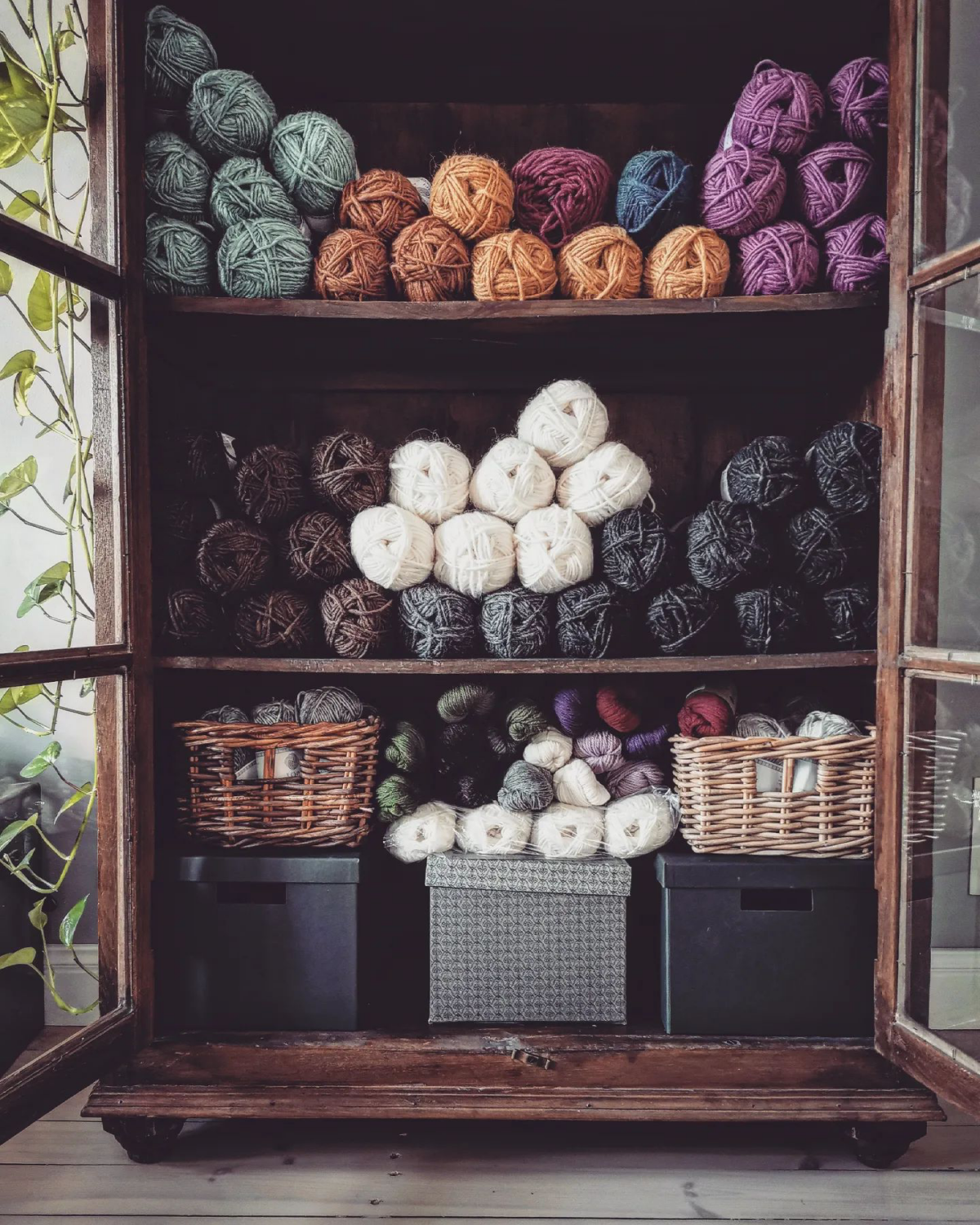
Step 2: Sort It Out Strategically
Okay, now focus on that glorious ‘keep’ pile. How you organize it now will determine how easily you can find what you need later. Organizing by color is pretty, but for serious crafting, you need a more functional system. I always recommend this order:
- By Fiber First: Put all the wools together, all the cottons together, and so on. This is the most important step because, as we just covered, different fibers have different storage needs. You want to keep your vulnerable wools separate and give them the VIP treatment.
- Then by Yarn Weight: Within each fiber group, separate your yarn by weight. Using the standard system helps: Lace (0), Fingering (1), Sport (2), DK (3), Worsted (4), Bulky (5), and Super Bulky (6). This makes project planning a breeze. When a pattern calls for DK-weight wool, you can go straight to that specific bin.
- Finally by Brand (Optional): This is an extra step, but it’s helpful for keeping yarns from the same brand or dyer together, which is super useful when you’re trying to match colors or textures for a larger project.
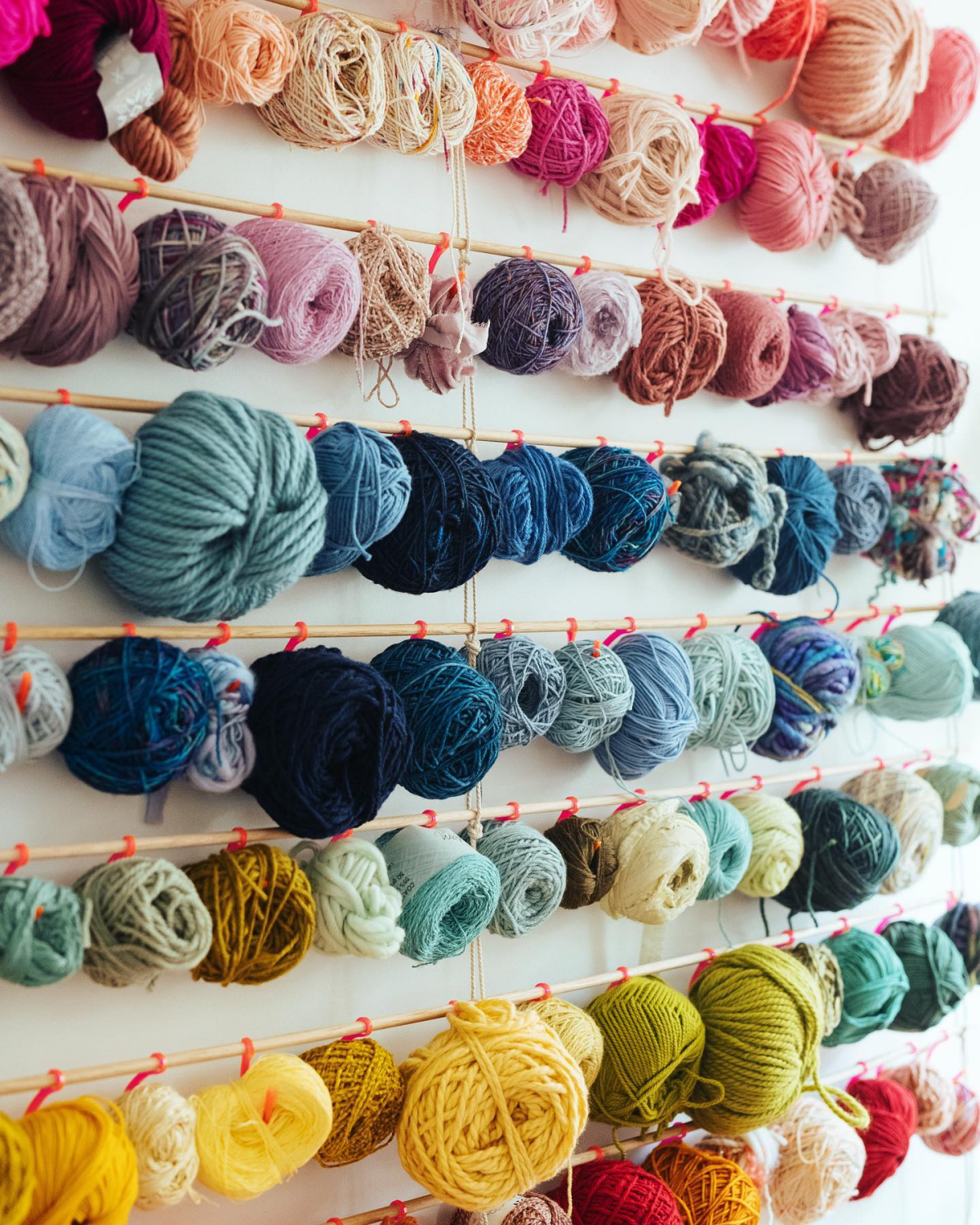
Step 3: Keep Track of What You Have
Once your yarn is sorted, you need to log it. This one step will stop you from buying a skein you already own and helps you find the exact yarn you need without a massive treasure hunt.
- The Low-Tech Way: A simple notebook or a box of index cards is fantastic. For each yarn, jot down the fiber, brand, colorway, dye lot, weight, and yardage. I like to tape a little snippet of the yarn to the card. It’s a tangible, reliable system that never needs a software update.
- The High-Tech Way: An online tool like Ravelry has a powerful ‘Stash’ feature where you can upload photos and log all the details. It’s searchable, so you can instantly find, say, all your worsted-weight blue wool. A few years ago, this saved me. I needed to repair a sweater and a quick search of my Ravelry stash showed I had half a skein of the exact dye lot left, tucked away in a bin. Project saved!
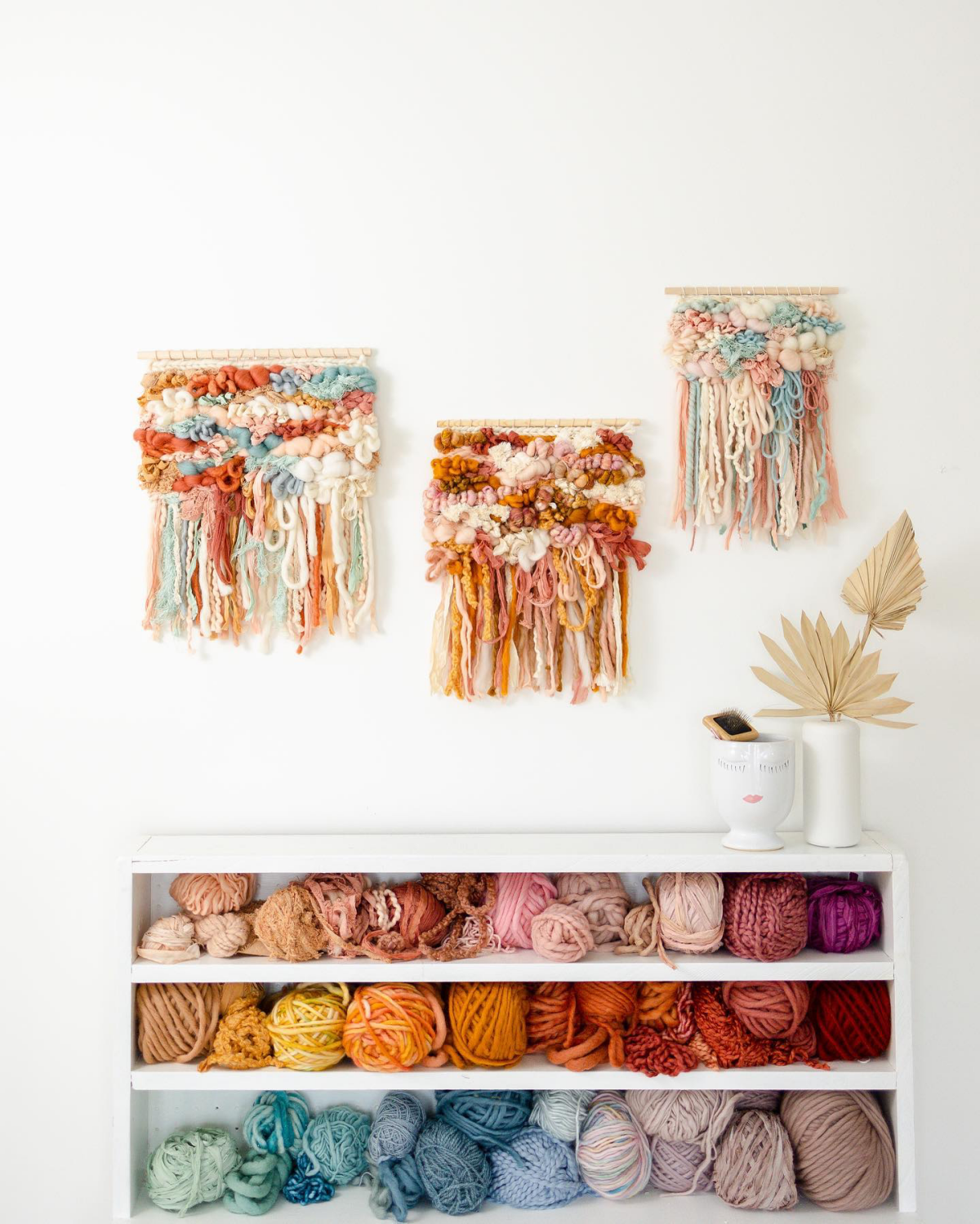
Step 4: Get Your Yarn Ready for Hibernation
How you prep your yarn for storage is a big deal. The biggest debate is always whether to wind yarn into cakes or balls. For long-term storage, leaving the yarn in its original hank or a loose, squishy ball is honestly best. Winding yarn tightly into a ‘cake’ on a ball winder puts the fibers under constant tension. Over months or years, this can stretch the yarn out, and it will lose its natural bounce. If you must cake your yarn to save space, wind it loosely. A good storage cake should feel soft and airy, not like a hard, dense brick.
Choosing Your Storage Armor
The perfect container protects yarn from its enemies while fitting your space and budget. There’s no single magic bullet; the best system is often a mix of different solutions.
So, let’s have a little storage showdown to see what might work for you.
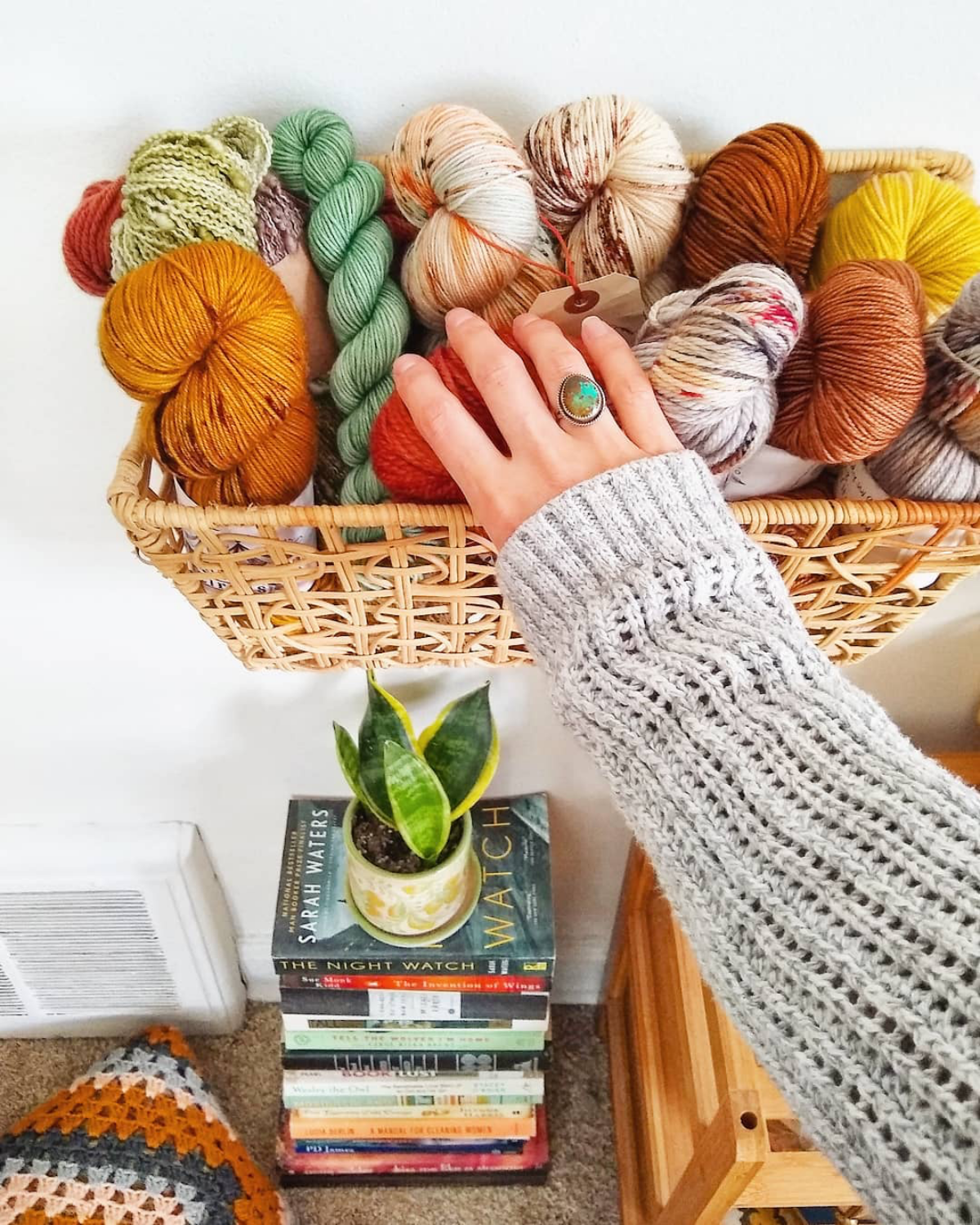
The Solution: Open Shelving (like IKEA’s KALLAX)
This is the classic ‘wall of color’ you see in beautiful craft rooms. It’s undeniably inspiring to be surrounded by all that potential.
- Best For: Acrylics, cottons (in dry climates), and any yarn you plan to use in the next few months.
- The Reality: It offers zero protection from dust, pet hair, or pests. And the biggest issue is UV light. I once had a student whose gorgeous wool display next to a sunny window was completely faded and brittle on the exposed parts within a year.
- The Cost: Can range from a simple $60 bookcase to a few hundred for a large cubby system.
- Quick Tip: If you go this route, rotate your skeins every few months to even out light exposure and dust them regularly. And hey, here’s a 5-Minute Yarn-Saving Mission you can do right now: go find any skeins sitting on a sunny windowsill and move them. You just saved them from getting ruined. Boom.
The Solution: Clear Plastic Bins
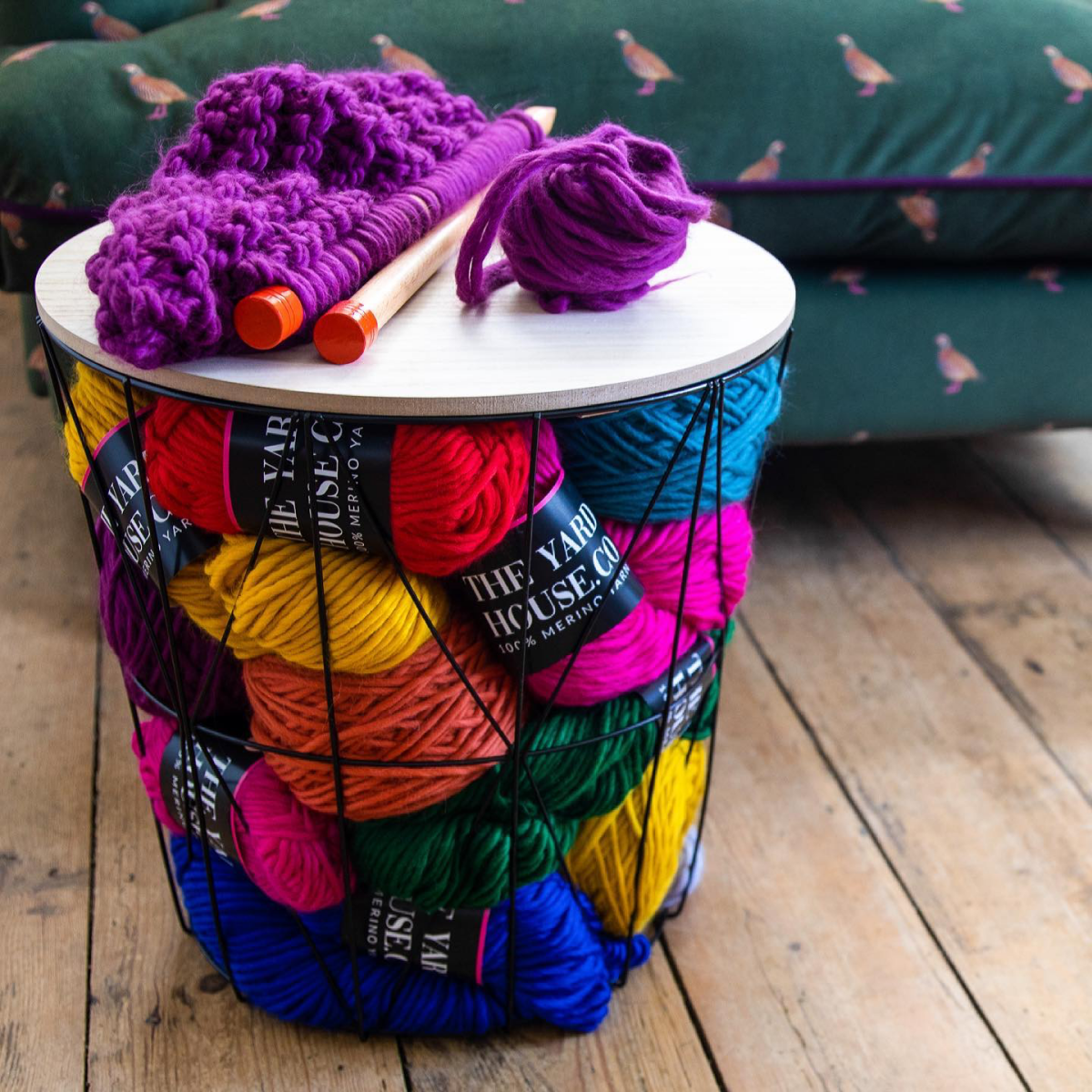
This is my personal workhorse method. They are affordable, they stack, and you can see what’s inside. It’s the gold standard for protecting valuable natural fibers.
- Best For: Pretty much everything, but especially wool and other animal fibers that need protection.
- The Reality: You need to get the right kind of plastic. Look for bins made from polypropylene (it’ll have a
5 in the recycling symbol). This plastic is stable and won’t damage your yarn. Steer clear of PVC. You can find good Sterilite or Rubbermaid bins at places like Target or Walmart. For wool, I like to drill a few tiny (1/8 inch) holes in the lid to allow for some air exchange and prevent mustiness.
- The Cost: Very budget-friendly. You can get a solid, lidded 60-quart bin for about $10-$20.
The Solution: Vacuum-Sealed Bags
Ah, the space-saver’s dream! They seem like a brilliant idea, but you need to be careful.
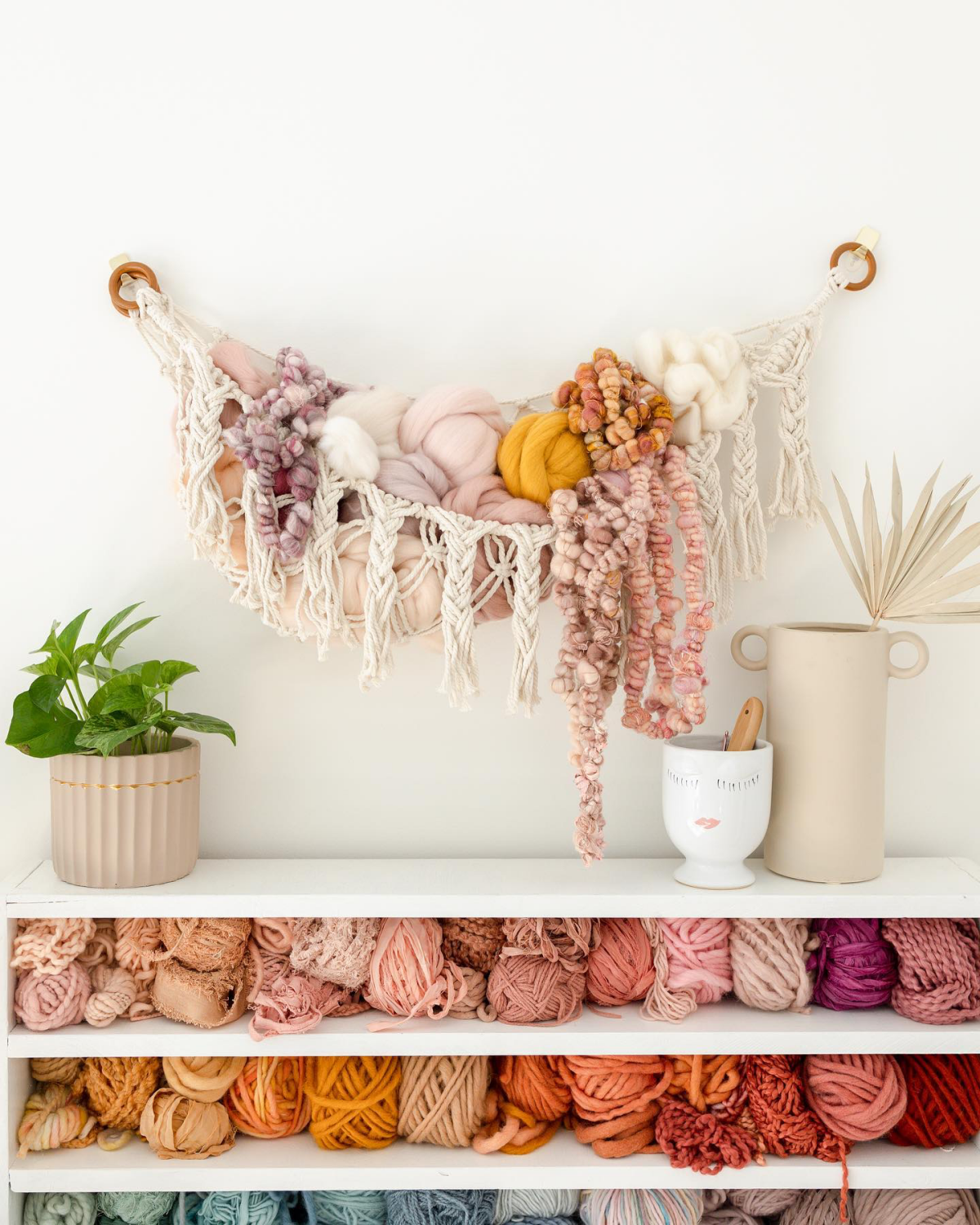
- Best For: Storing bulky acrylics or other synthetic fibers where you just want to shrink them down for space.
- The Reality: This is a TERRIBLE idea for wool, alpaca, or any fiber with natural elasticity. Sucking all the air out crushes the fibers, and they may never regain their original bounce and fluff. You’re basically killing what makes the yarn special. Use them for your bomb-proof synthetics only.
- The Cost: A pack of assorted-size bags usually runs between $20 and $40.
The Solution: Cedar Chests
This is the traditional, heirloom-quality solution. The aromatic oils in the wood are a natural moth repellent.
- Best For: Your most precious, high-end fibers like cashmere, qiviut, or special silks.
- The Reality: They’re effective, but the cedar scent fades and needs to be refreshed every few years by lightly sanding the interior or using cedar oil. They’re also heavy and can be a serious investment.
- The Cost: The luxury option. A good one can easily run you $200 to $500 or more.
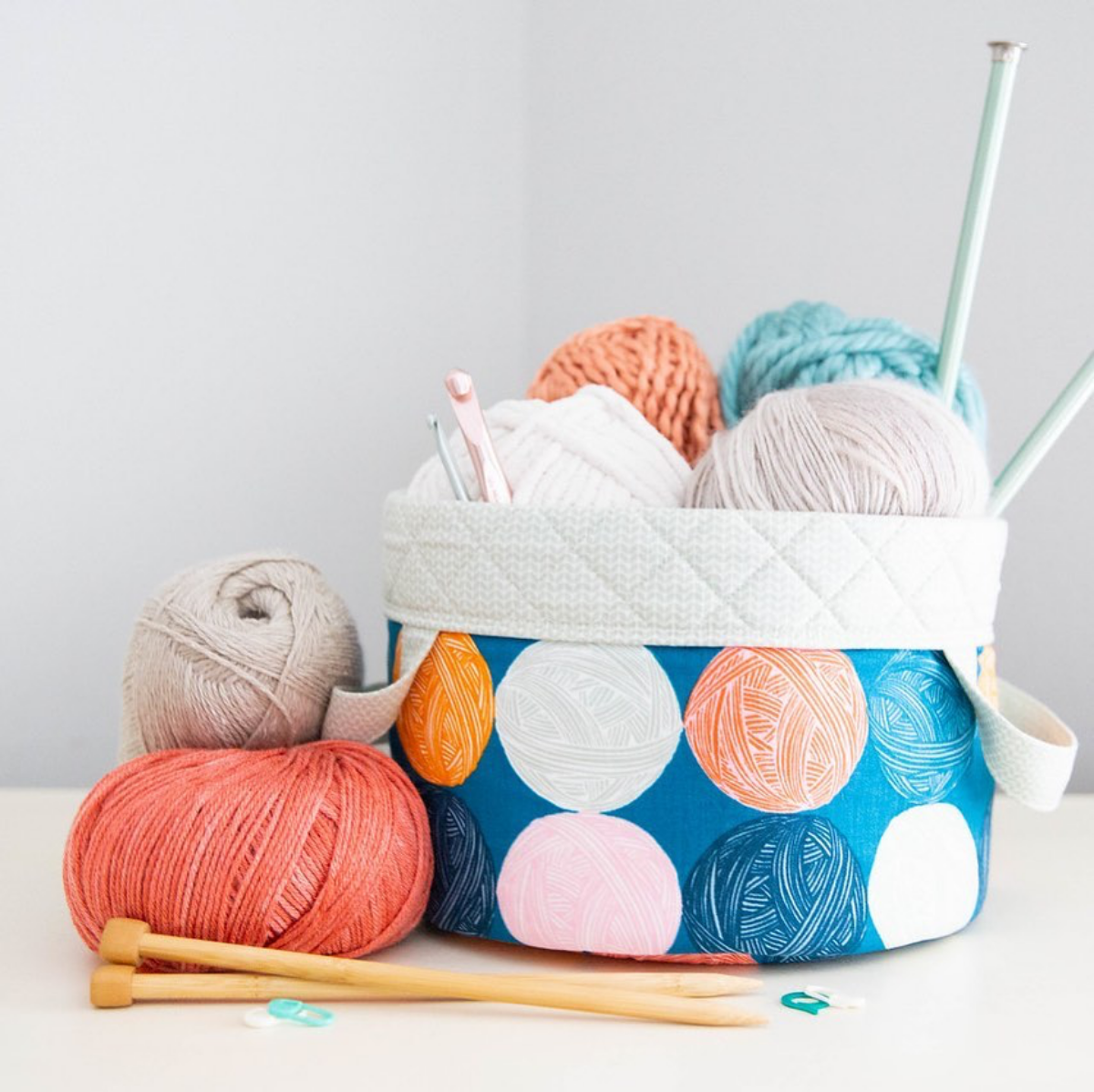
Your Home’s Climate is a Big Deal
Where you live has a massive impact on your storage strategy. The advice I give a knitter in Arizona is totally different from what I tell someone in Louisiana.
If you live somewhere with high humidity, your main enemy is mold. You have to prioritize air circulation. Never, ever store yarn in a basement, garage, or attic unless it’s fully climate-controlled. Use those plastic bins with ventilation holes. You can also toss in some rechargeable desiccant packs (those silica gel canisters). Quick tip: Most of these can be “recharged” by baking them in a low oven for a few hours—just check the manufacturer’s instructions! Early in my career, I learned this the hard way. I stored bags of beautiful Pima cotton in a friend’s garage in Florida for one summer. When I came back, every last skein was a disgusting, smelly mess of black and green mildew. A total loss. It was a costly mistake that taught me to always respect humidity.
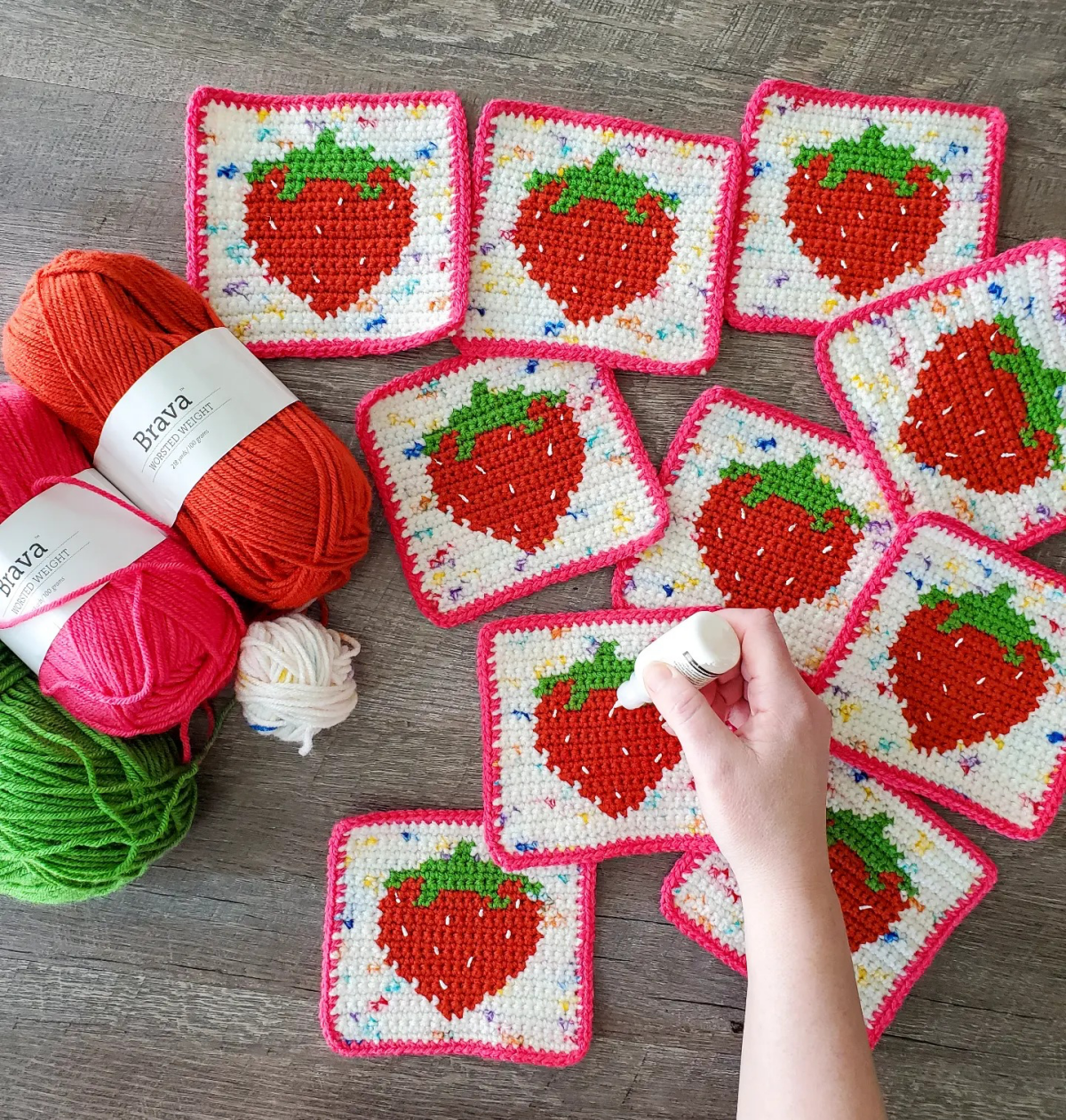
If you live in a dry or arid region, your concerns are dust and brittleness. Closed containers are a must to keep out that fine, pervasive dust. For really delicate fibers, you might even consider running a small humidifier in your craft room to help them retain a healthy bit of moisture.
Pest Patrol: This is Non-Negotiable
Okay, listen up, because this is probably the most important part of this whole guide. A single pest infestation can wipe out a lifetime collection of yarn. You have to be vigilant. The main culprits are clothes moths and carpet beetles—and it’s their larvae that do the eating.
Prevention is Your Best Defense
- Quarantine All New Yarn: This is my
1 rule. Any yarn from an outside source—a yarn swap, a friend’s destash, an estate sale—is a potential trojan horse. Before it gets anywhere near your main stash, seal it in a zip-top bag and pop it in the freezer for at least 72 hours. Then, let it come back to room temperature for a full 24 hours. This tricks any stubborn, unhatched eggs into thinking it’s spring. Then, put it back in the freezer for another 72 hours. The second freeze gets ’em for good.
- Use Repellents, Not Poisons: Sachets of dried lavender, rosemary, or cedar blocks can help make your stash less appealing to moths. Toss a couple of cedar blocks or one lavender sachet into each bin, and plan to refresh them about once a year. But be realistic: these are only repellents. They won’t kill an active infestation. And please, for the love of all that is crafty, DO NOT USE MOTHBALLS. They are toxic, the chemical smell is overpowering, and it will never come out of your yarn. Ever.
- Keep It Clean: Pests love dirt and food stains. Vacuum your storage area often, getting into all the corners to remove dust and hair that can attract them.
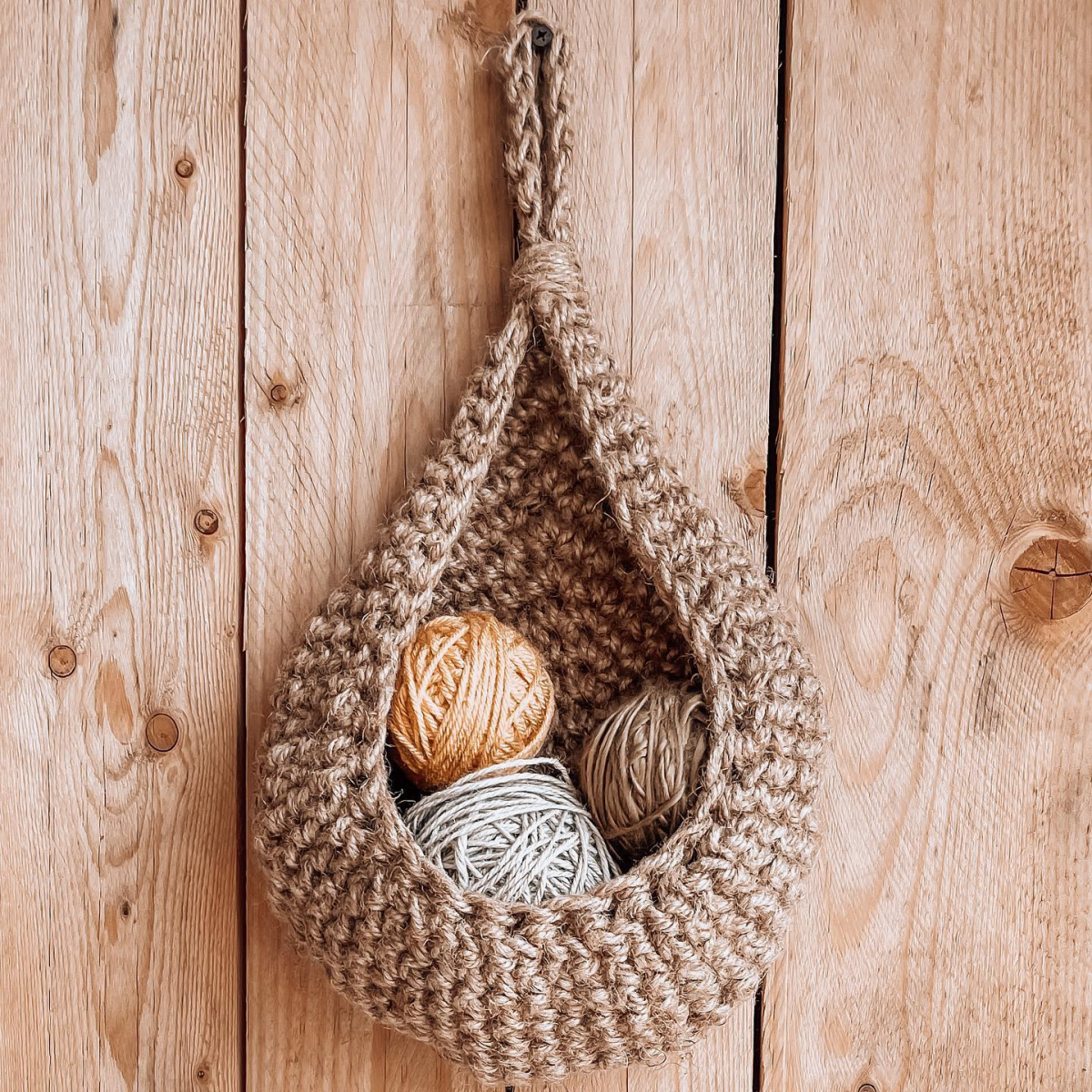
When You Find an Infestation
If you find the dreaded evidence—webbing, larvae, or damaged yarn—you have to act fast.
- Isolate: Immediately bag up the infested yarn and anything stored with it. Get it out of the room.
- Freeze: Go through your entire stash, bin by bin. If you see any signs, that whole bin needs to go through the freezer treatment described above.
- Clean: Vacuum the empty shelves, bins, and floors thoroughly. Wipe down all surfaces. Toss the vacuum bag outside immediately.
- Accept Your Losses: It’s heartbreaking, but sometimes a skein just can’t be saved. If it’s riddled with damage, it’s better to discard it than risk the problem coming back.
Final Thoughts: It’s a Practice, Not a Project
Organizing your yarn isn’t a one-and-done chore. It’s an ongoing practice of stewardship. I recommend you go through your stash at least once a year. It’s a chance to clean things out, check for any issues, and just reconnect with the beautiful materials you’ve collected. A well-managed stash isn’t restrictive; it’s liberating. It clears away the stress of clutter and protects your investment. And most importantly, it frees you up to focus on the pure joy of your craft, totally confident that the perfect yarn is safe, sound, and waiting for you.
Inspirational Gallery
Clear Plastic Bins: Ideal for plant fibers and superwash wools, containers from brands like Sterilite offer a perfect view of your collection and provide an airtight seal against moisture and pests.
Breathable Fabric Boxes: For delicate animal fibers like alpaca or merino that need to breathe, opt for fabric solutions like IKEA’s SKUBB series. They prevent mustiness by allowing for crucial air circulation.
Ultimately, a mix of both is often the perfect strategy for a diverse stash.
It’s not the adult moth you see fluttering near a light that’s the danger, but its larvae. A single female casemaking clothes moth can lay 40-50 eggs directly on your prized merino skein, and the larvae will feast on the protein fibers.
Tired of playing yarn-roulette? A simple tag is your best friend.
- Use a basic hole punch on a cardstock tag and loop a snippet of the yarn through it.
- Note the essentials: brand, fiber content, weight (e.g., fingering, worsted), and yardage.
- For partial skeins, add the current weight in grams. A small digital kitchen scale is invaluable for this!
A critical warning for yarn winders: Avoid creating tight, dense balls of yarn. While they look neat, constant tension is the enemy of elasticity. It stretches out the fibers, which can permanently damage their memory and bounce, leading to a limp final fabric and inaccurate gauge when you knit or crochet.
- It stops potential pests in their tracks, preventing them from infesting your main collection.
- It gives you a moment to admire your new purchase and plan its perfect project.
- It ensures you have time to properly label and catalog the yarn before it gets lost in the stash.
The simple secret to a healthy collection? A yarn quarantine. Keep all new skeins in a sealed ziplock bag for at least a month before introducing them to their new home.
Aromatic cedar doesn’t just repel moths; its oils are toxic to young moth larvae, stopping an infestation before it can even begin.
But this natural protection isn’t permanent. The potent oils fade over time. To keep your cedar blocks or sachets working hard, give them a light sanding with fine-grit sandpaper every six months. This exposes a fresh layer of wood and revives the protective aroma.
There’s a unique and functional beauty in arranging your stash by color. Transforming a simple shelf into a rainbow gradient isn’t just for a stunning photo. It’s an active source of inspiration. Seeing all your greens grouped together might spark an idea for a leafy lace shawl, while placing a vibrant pink next to a muted taupe could be the start of your next great colorwork sweater. Let your storage become your muse.
Is it ever okay to use vacuum-sealed bags?
They are fantastic for space-saving and offer unbeatable protection from pests, but use them selectively. The intense compression can crush the natural
Take your organization to the next level with a digital inventory on a platform like Ravelry or even a simple spreadsheet. Knowing exactly what you have prevents impulse buys and helps you
Embrace the Japanese concept of mottainai—a deep-seated regret concerning waste. Don’t let small, leftover balls of yarn get forgotten. A wonderful way to honor every yard is to tie them together into a continuous










